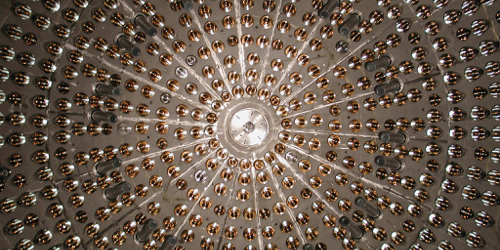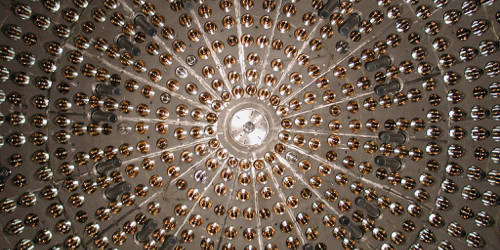Still Waiting For Electron Decay
Conservation of charge is thought to be a fundamental law of nature, so any experiment proving otherwise would upend the standard model of particle physics—and perhaps point physicists to new theories. Researchers have therefore studied the electron, the lightest of the known charged particles, to see if it might decay without conserving charge into two neutral particles (a neutrino and a photon). This possibility is, however, looking even more remote than previously thought. New results from scientists running the sensitive Borexino neutrino detector, buried deep in the Gran Sasso mountain in Italy, reveal that if such reactions occur, they happen less than once every years.
Borexino consists of a shell of petroleum-based liquid that lights up when a neutrino, a nearly massless neutral particle, knocks an electron loose from one of the liquid’s atoms. The detector’s roughly 2000 photomultipliers then amplify and sense the emitted light. An international team of researchers calculated the sensitivity of the detector to photons produced via hypothetical electron decays into a photon and a neutrino. The detector, however, does not distinguish between photons produced in electron decay and neutrinos produced by the Sun or the radioactive decay of carbon, bismuth, and polonium in the surrounding rock. The authors therefore carefully modeled the background from these sources. They then looked for photon “events” above this background with energies near 256 kilo-electron-volts, an energy corresponding to half the electron rest mass. The researchers used 408 days’ worth of data to determine a mean electron lifetime roughly 2 orders of magnitude longer than the previous limit.
This research is published in Physical Review Letters.
–Katherine Kornei
Correction (11 December 2015): An earlier version of this Synopsis incorrectly stated that the researchers detected neutrinos. They detect photons.





